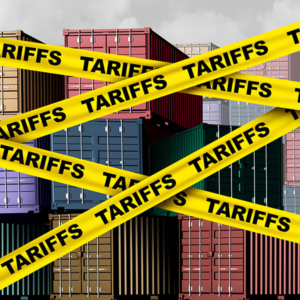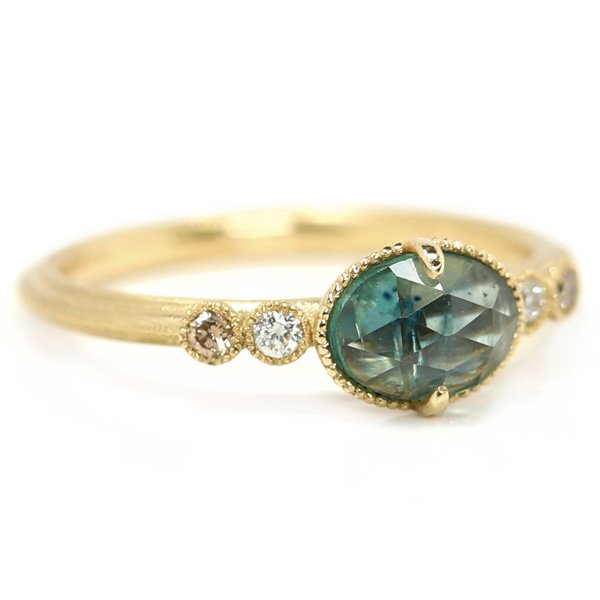
This may or may not be true for some members of the industry, but certainly for customers, the selection of sapphires on the market can seem overwhelming.
Just when you’ve gotten the hang of the notion that sapphire comes in an assorted range of blues—bam!—guess what, you can get a whole rainbow. Star sapphires? And they’re not even talking about the cut? Padparadscha—padpa what? And, of course, today’s hot ticket—the Montana sapphire.
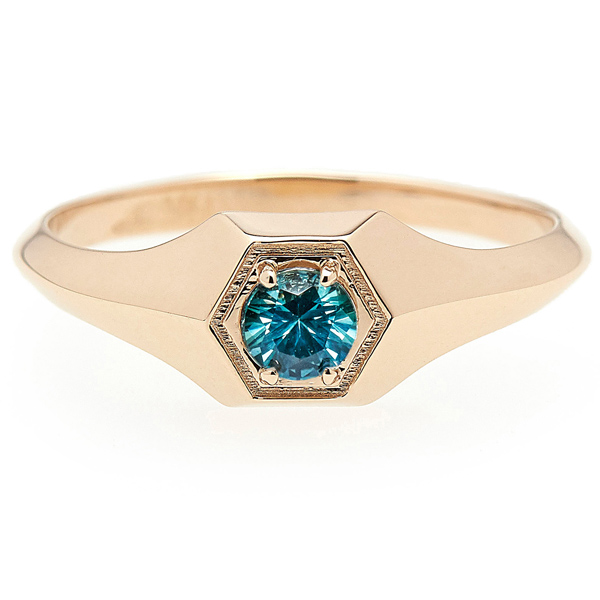
Montana sapphire was the gemstone trend that quietly dominated JCK Las Vegas this year. It wasn’t necessarily that many brands had mega collections dedicated to them, it was that many, many brands had at least some, and many of the pieces they were featured in were major. Tally all that up and it became the gemstone everyone was talking about, even if they weren’t shouting it.
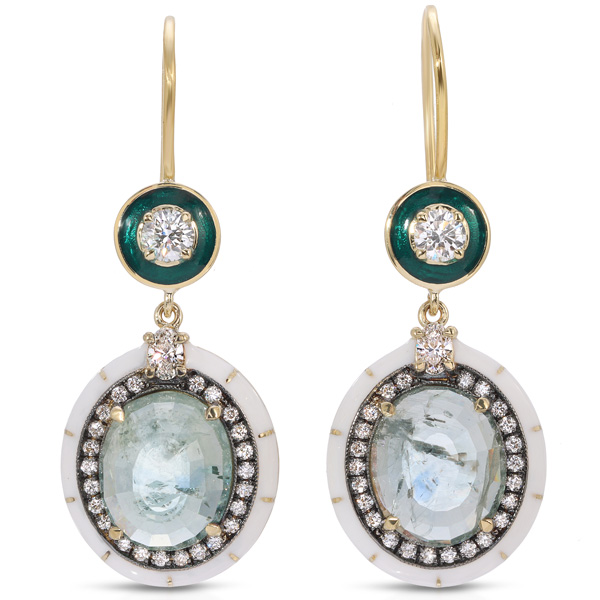
So what exactly is a Montana sapphire? For starters, um, it’s from Montana. No irony in its name. Montana is the only commercial producer of sapphire in the United States, and while Montana sapphire has been a “thing” since the late 1800s, it’s only recently that its origins have been so highly marketed. The reason is simple, but important—today’s customer wants to know where their goods are coming from.
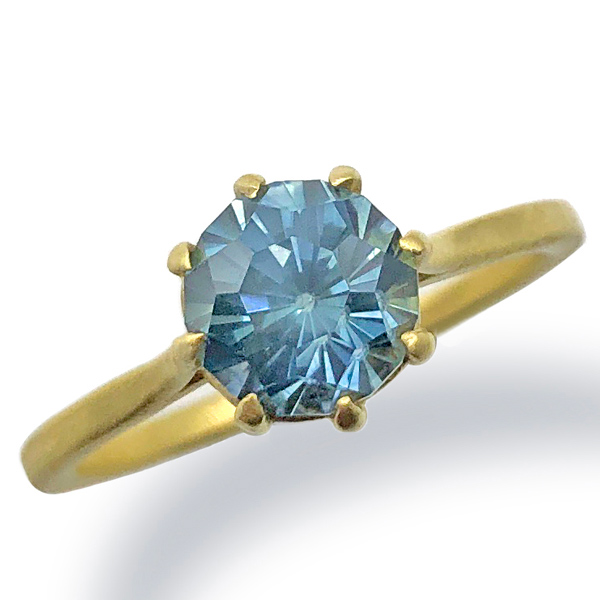
And that’s not an easy concept to digest as a consumer. We know what we’re told by many brands, our jewelers included, about the origins of the things we buy. We want to believe it when a company we like tells us about its ethical factory in Sri Lanka, or its responsible gem mine in South Africa. But most people will go their entire lives without ever even dreaming of visiting those faraway places. And while some shoppers will really do their research and get to know their stuff, most just want to feel good about their purchases without having to try too hard. And what could be better—and more relatable, in a way—than gemstones mined right here in the good old U.S. of A.?
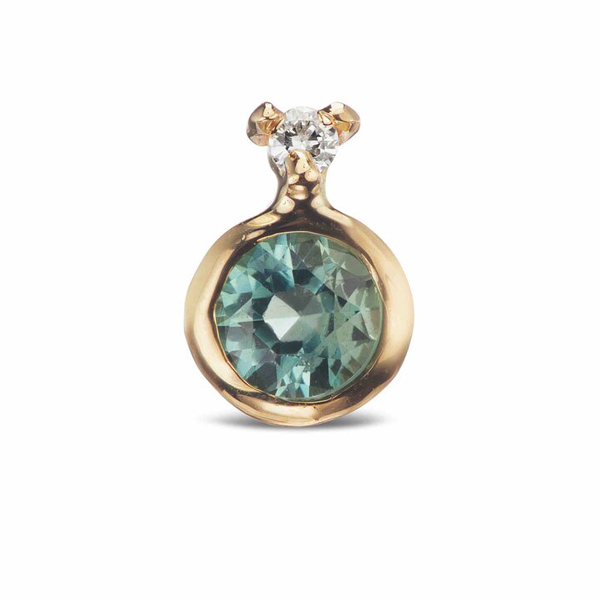
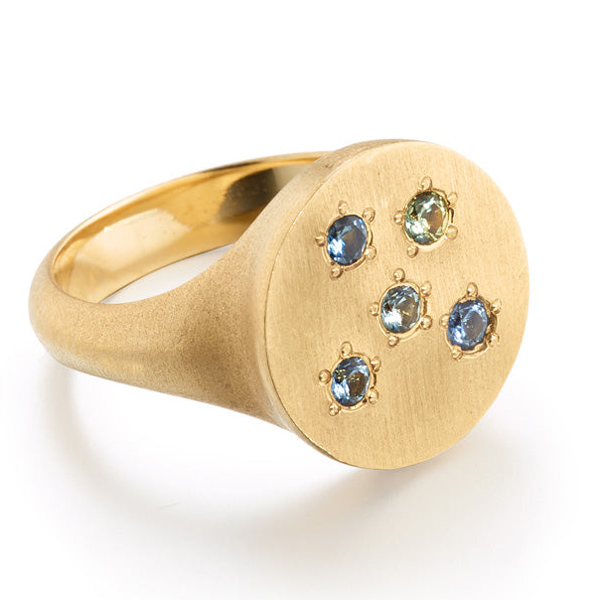
Many young designers love Montana sapphires for their sustainability and the way customers connect with them, with some dedicating entire lines to the gemstone. “The unique pastel colors of Montana sapphires are one of the reasons I love them so much,” says designer Elizabeth Moore. “It’s not a commitment color but one that is calming and strong, and they’ve been a staple in my collections since we launched two years ago. Of course, supporting U.S. businesses is another huge plus!”
Though available in a range of colors (and most heat-treated), it’s an almost teal blue–I’ve seen it labeled as everything from blue-green to denim—that has jewelers buzzing.
“I am a water person, and there is no other gem that achieves the nuance and saturation in a range of blue quite like Montana sapphire,” says Eve Streicker of Original Eve. “You can see the span of Montana blues in my collection from royal blue to cornflower blue, peacock teal-blues to sky blue. With the hardness of sapphire providing a sharp polish and brilliant interaction with light, a Montana sapphire is truly an unparalleled gem and an excellent choice for everyday wear.”
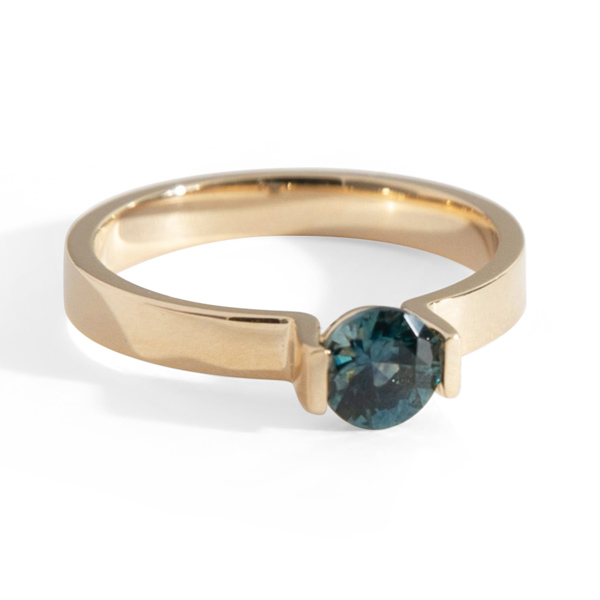
Given the popularity of both blue and green, especially during the summer months, it’s exciting to get a two-for-one combination in this gorgeous gemstone, which warrants some space in all retailers’ showcases.
Top: Marigold ring in 14k yellow gold with oval rose-cut Montana sapphire and 0.08 ct. t.w. champagne diamonds, $1,200; Ellie Lee Jewelry
- Subscribe to the JCK News Daily
- Subscribe to the JCK Special Report
- Follow JCK on Instagram: @jckmagazine
- Follow JCK on X: @jckmagazine
- Follow JCK on Facebook: @jckmagazine

